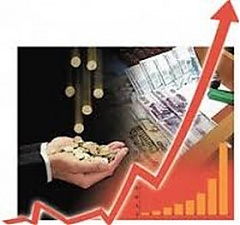Analytics, Economics, Estonia, EU – Baltic States, GDP
International Internet Magazine. Baltic States news & analytics
Friday, 26.04.2024, 11:07
Commission cuts Estonia's 2016 growth estimate to 1.1%
 Print version
Print version |
|---|
"Real GDP growth in Estonia is expected to slip to 1.1%
this year but should recover to 2.3 % in 2017 and 2.6% in 2018, as negative
external shocks fade and investment recovers. Unemployment is set to rise as
reforms prompt work-incapacity pensioners to re-enter the labor market. The
fiscal position is projected to dip below balance in 2017-2018 but public debt
should remain below 10% of GDP," the Commission's Autumn 2016 Economic
Forecast says on Estonia.
Estonia's inflation and unemployment are set to remain low
and the state budget in balance.
The Commission estimates inflation in Estonia to accelerate
from 0.8% this year to 2.6% in 2017. The unemployment rate is forecast to be
6.5% this year and 7.4% in 2017 and the general government balance to be
positive by 0.5% of GDP this year and negative by 0.4 % of GDP in 2017.
The general government gross debt is seen to grow marginally
from 9.4% of GDP this year to 9.5% in 2017. The current account surplus will
contract from 1.8% this year to 1.6% in 2017.
"Estonian companies are increasingly investing in
equipment as the domestic labor force is becoming more expensive. Estonian
businesses are therefore projected to increase investment over the forecast
horizon. This is expected to be accompanied by higher bank lending to
enterprises. In parallel, public investment is projected to soar in 2017 as the
bulk of projects under the new programming period of EU investment enter the
implementation phase," the Commission said.
"By contrast, private consumption growth is expected to
decelerate in 2017 and 2018 as rising consumer price inflation overshadows the
increase in wages. Similarly, household investment is set to slow due to lower
real incomes. Nevertheless, domestic demand is set to remain the main driver of
growth over the forecast horizon," it said.
While GDP growth remains moderate, its composition appears
favorable to government revenue, especially labor and consumption taxes.
"Considering the already high participation rate and
lackluster GDP growth, the room for further employment gains appears limited.
Nevertheless, the introduction of a 'work ability' reform in mid-2016 is
gradually bringing work-incapacity pensioners back to the labor market. Owing
to the reform, employment is expected to continue growing in 2017-2018, while
unemployment is also projected to rise from about 6.5 % in 2016 to over 8 % in
2018," the Commission said.
Wage growth is forecast to remain robust, albeit slowing to
about 5% annually in 2017-2018 on account of public sector wage restraint, it
added.








 «The Baltic Course» Is Sold and Stays in Business!
«The Baltic Course» Is Sold and Stays in Business!

